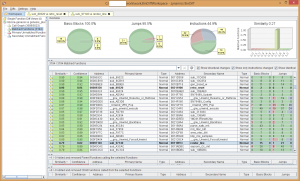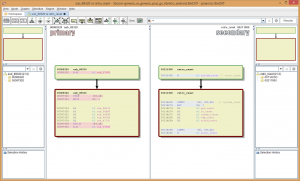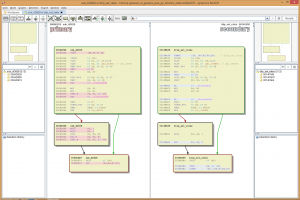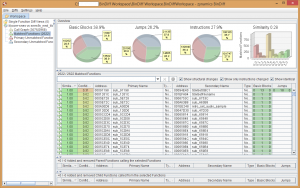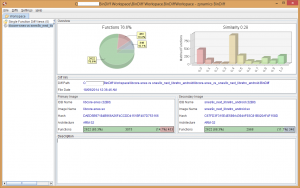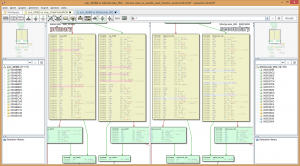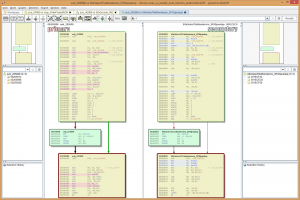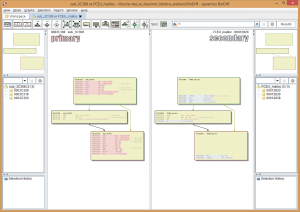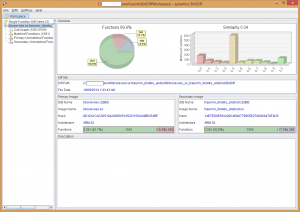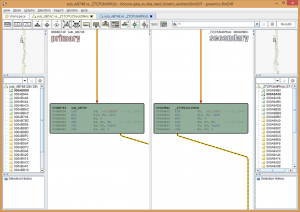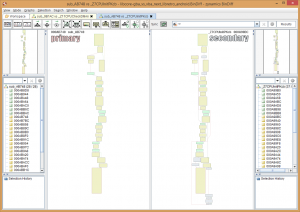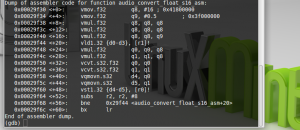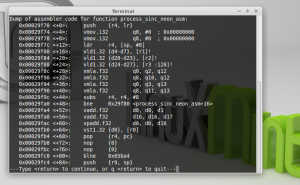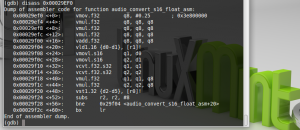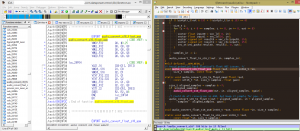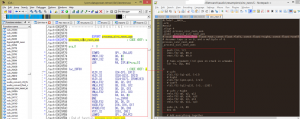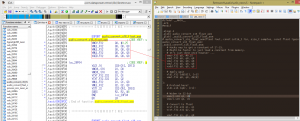Yesterday, Hyperkin responded to our earlier article by acknowledging that they indeed did do what we claimed them of having done. In response, they posted a raw source code dump of the video game emulator software in question, confirming they were indeed infringing copyright and violating licenses.
However, they did not open source the code taken from the RetroArch project that is used within Hyperkin’s own frontend software.
By using RetroArch’s GPLv3 code, they are not only violating the license but breaking clauses that prohibit “Tivoization”
Today, Hyperkin posted another statement regarding the allegations of RetroArch code, admitting that code is indeed used in their product shipped in all versions of their firmware below the most recent release.
https://www.retro5.net/
I’d like to clarify one point regarding the allegations over at libretro.com: we are not using any of RetroArch in our “frontend” (libretron.so). While it is true that a few ASM functions from RetroArch were previously found in our frontend library, these were merely remnants of old test code which we unfortunately forgot to remove. The offending code has been removed as of the v2.0 update. We’re sorry that this code was left in the binary up until recently; it was merely an oversight on our part. Furthermore as you will see from the source release of the emulator cores, we have our own interface between the frontend and the core plugins, totally different from that used by RetroArch itself.
As our frontend does not include any code from the RetroArch frontend then it does not fall under GPLv3 as they claim, and thus is not bound by any of the anti “TIVO-ization” stuff.
We believe that previously distributed copies of Hyperkin’s firmware now fall under GPLv3 licensing and anti-tivoization terms and must be open sourced in order to adhere to the license. Also, we do not know the legality of selling a product with a firmware containing GPLv3 code in a TIVOized state, and then removing that GPLv3 code later on in a successive firmware update to effectively TIVO-ize it. That is something for FSF lawyers to ponder.
Visual evidence of RetroArch’s code in use by Hyperkin’s frontend binaries can be found here:
– http://imgur.com/a/i56YF
– http://www.libretro.com/index.
This can be compared against this codebase snapshot (they based the code’s inclusion on this snapshot of the code) –
https://github.com/libretro/
They’ve also alluded to using forced firmware updates to make sure the user cannot run original copies of the GPL software they bundle on this device, further adding to the TIVoization claims –
http://www.gamnesia.com/
Q: Assuming someone does break into it, how are you going to deal with that?
A: We do provide firmware updates through SD card support. If we start noticing people hacking and things like that—which I’m not against whatsoever; that’s the times we live in now, where if you could hack something, you’re a genius—we can release firmwares at any moment that would be required to start playing games. With that, you know, we can limit the control on that. – See more at: http://www.gamnesia.com/articles/gam…5#.VCKBh-IvBhE
There is another problem with what was stated here –
https://www.retro5.net/
They claim they no longer have any RetroArch code in their latest firmware and that they have their own API that they use to dynamically link the core against their frontend (unreleased and closed-source). The problem with this is that their API appears to be not GPL-compatible.
For evidence, download the ZIP contained in here (RetronN5Source-20140923.zip) and look at engine/retronCommon.h.
This API would need to be under a GPL-compatible license to be compatible with FCEU and VBA. Furthermore, it’s unknown what license the ‘frontend’ is licensed under, and since it’s closed-source and kept concealed, there’s no way of knowing if it infringes on the GPL license or not.
A core being exposed to the frontend through an API like this constitutes a combined work, because it is not a ‘well-separated work’ as per the terms stated here –
http://www.gnu.org/licenses/
The core doesn’t do anything without the frontend, and the frontend links to this core dynamically through dynamic linking. The core is reliant on the frontend to do the audio/video/input processing, without which nothing would be displayed on the screen, no input would be received by the core, and no audio samples would get output.
Therefore, we believe that their latest acknowledgements raises even more questions as to the level of compliance they’ve demonstrated so far with the GPL license. It raises therefore even more questions than it solves, further adding to the already quite considerable list of problems with this device.
Non-commercial cores – SNES9x Next
And of course, the fact that the two non-commercial cores are still being shipped with the device is another problem altogether. The license for SNES9x states specifically:
https://github.com/snes9xgit/snes9x/blob/master/docs/snes9x-license.txt
| Permission to use, copy, modify and/or distribute Snes9x in both binary |
| and source form, for non-commercial purposes, is hereby granted without |
| fee, providing that this license information and copyright notice appear |
| with all copies and any derived work. |
| This software is provided ‘as-is’, without any express or implied |
| warranty. In no event shall the authors be held liable for any damages |
| arising from the use of this software or it’s derivatives. |
| Snes9x is freeware for PERSONAL USE only. Commercial users should |
| seek permission of the copyright holders first. Commercial use includes, |
| but is not limited to, charging money for Snes9x or software derived from |
| Snes9x, including Snes9x or derivatives in commercial game bundles, and/or |
| using Snes9x as a promotion for your commercial product. |
| The copyright holders request that bug fixes and improvements to the code |
| should be forwarded to them so everyone can benefit from the modifications |
| in future versions. |
| Super NES and Super Nintendo Entertainment System are trademarks of |
| Nintendo Co., Limited and its subsidiary companies. |
“Commercial users should seek permission of the copyright holders first” – refer to Hyperkin’s Retron5 licensing software page here –
http://retron5.in/node/9
They used the SNES9x Next fork specifically. This is a fork that I created specifically to serve as a libretro core. My list of contributions extends to the following:
– Added game-specific speedhacks to make them fullspeed for low-power systems like the Nintendo Wii and PlayStation3. This includes games like Final Fantasy III/VI, Star Fox, Star Fox 2, Super Mario World 2: Yoshi’s Island, and numerous other cores which were previously too slow on such devices.
– Added SuperFX overclocking code to make it possible to run SuperFX games at faster rates.
– Converted the entire codebase from C++ to C89.
– Wrote the libretro API integration parts together with Themaister/Hans-Kristian Arntzen. (NOTE: Libretro is licensed under the MIT license)
As you can guess, they have never sought my permission to use this in their commercial product. And they will never get it either. They are expressly forbidden by me (one of the copyright holders) to use this version of SNES9x in their commercial product. I’m still awaiting a response from the rest of the upstream SNES9x devs but I can’t expect their reaction will be that much different.
I will be taking steps of my own accord to ensure that this situation will be rectified.
Non-commercial cores – Genesis Plus GX
The Genesis Plus GX developers have been made aware of the facts as well and they can make their own moves as to how to deal with this.
On SNES9x Next however, I have considerable copyright claims and therefore I am in an ideal position to clamp down on this misuse of its code.
Last parting message
This can be read from Hyperkins’ response to our earlier article on Nintendolife.com –
It has always been our intention to release the relevant source code for the open source emulators used within RetroN 5. We have not been as quick as we could have been, since we have been busy improving the RetroN 5 user experience. The relevant source code has now been released. From this point forward we will not only keep our copy of this code updated for those who wish to obtain the latest version, but also submit patches for any fixes that we implement back to the original projects so that the entire community may benefit. Hyperkin will continue to endeavor to fulfill the licenses of any project used within RetroN 5 and any other software we write.
If Hyperkin is indeed serious about this, they will save my time and the time of the Genesis Plus GX developers by pre-emptively (and immediately) stripping the non-commercially licensed SNES and Genesis cores from their product. We’d rather be busy doing actual development that users benefit from and that benefits the community instead of having to go to the trouble of sending a bunch of Cease & Desist notices.
Also, let it be known that as of this moment I have contacted the FSF regarding the GPL violation matters because there remains too many unanswered and unsolved problems for us to be thoroughly satisfied. Our beef is not with the product – if Hyperkins’ Retron5 was put out in a honest way and in a way that wouldn’t infringe upon the licenses of these emulators, they would be legally allowed to use it in this way. As it stands, they did not do their homework before putting this product out and their actions so far reek of negligence, irresponsibility and a calculated move to reap the rewards of copyleft code without having to honor the license’s terms.

